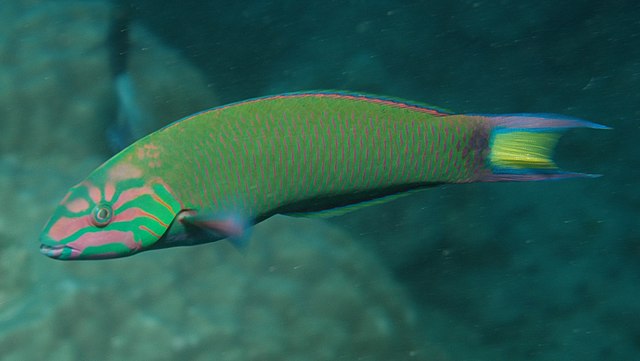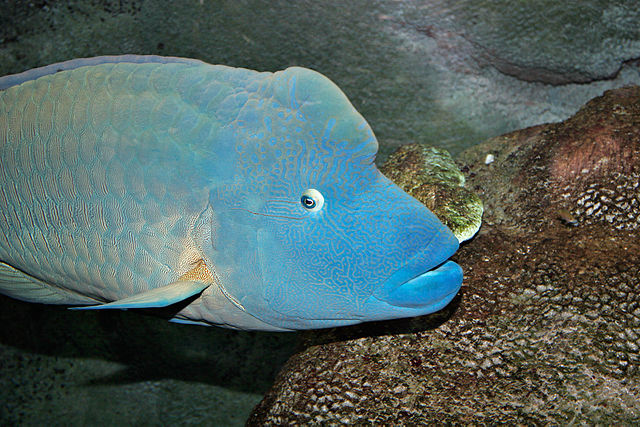Parrotfish are a group of fish species traditionally regarded as a family (Scaridae), but now often treated as a subfamily (Scarinae) or tribe (Scarini) of the wrasses (Labridae). With roughly 95 species, this group's largest species richness is in the Indo-Pacific. They are found in coral reefs, rocky coasts, and seagrass beds, and can play a significant role in bioerosion.
Parrotfish
Scarus zelindae in its mucus cocoon
The strong beak of Bolbometopon muricatum is able to grind the sturdiest corals.
The bicolor parrotfish (Cetoscarus bicolor) was described by Eduard Rüppell in 1829. In 1835, he mistakenly described the terminal phase, featured on this photo, as a separate species, C. pulchellus
The wrasses are a family, Labridae, of marine fish, many of which are brightly colored. The family is large and diverse, with over 600 species in 81 genera, which are divided into 9 subgroups or tribes.
They are typically small, most of them less than 20 cm (7.9 in) long, although the largest, the humphead wrasse, can measure up to 2.5 m (8.2 ft). They are efficient carnivores, feeding on a wide range of small invertebrates. Many smaller wrasses follow the feeding trails of larger fish, picking up invertebrates disturbed by their passing. Juveniles of some representatives of the genera Bodianus, Epibulus, Cirrhilabrus, Oxycheilinus, and Paracheilinus hide among the tentacles of the free-living mushroom corals and Heliofungia actiniformis.
Wrasse
Cleaner wrasses, Labroides sp., working on gill area of dragon wrasse Novaculichthys taeniourus, on a reef in Hawaii
Giant Napoleon wrasse Cheilinus undulatus in Apo Reef, Philippines
Humphead wrasse, Cheilinus undulatus, Melbourne Aquarium








